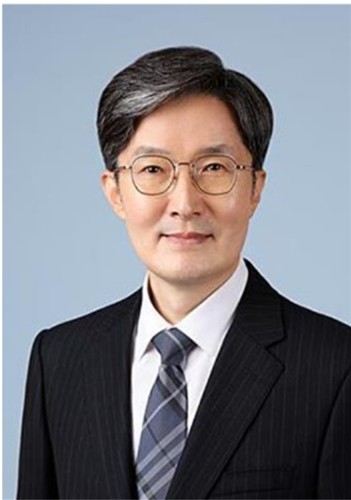The global capital markets experienced unprecedented volatility in the first half of the year, swinging between extremes. Nevertheless, US equities have continued to reach record highs. Despite ongoing US tariff disputes, inflation in the first half remained relatively stable, contrary to expectations. Several factors are believed to have contributed to this. When the Trump administration took office at the start of the year, companies proactively secured sufficient inventories of imported goods before tariffs were announced, mitigating short-term price increases. The longer-term impact is expected to materialize with a time lag.
China’s recently released first-half GDP growth exceeded expectations, driven by robust exports. This appears to be the result of Chinese firms accelerating exports during the US reciprocal tariff grace period. In June, US consumer prices remained stable, aided by falling auto prices, but excluding autos, inflation reached its highest level since August 2022. Toyota Motor Corp. of Japan has stated it will maintain prices in the US for the time being, even if tariffs are imposed. Many companies are attempting to curb price increases through cost-cutting measures. Meanwhile, according to Goldman Sachs, the cost burden on consumers from tariffs rises by 10% after two months and by 40% after three months. Therefore, it is still premature to fully assess the impact of tariffs on inflation.
Despite the third-highest volatility on record and uncertainty over US tariff policy in the first half, global pension funds have sought to diversify beyond their traditional US-centric asset allocations. This diversification is being approached as a strategic shift away from US concentration. While this is a challenging task, it is expected to proceed gradually with a long-term paradigm shift in mind. As such, reviewing the key investment points for each asset class in the second half is meaningful.
Equities
First, it is important to recognize that market valuations are excessive, driven by US exceptionalism. While US innovation, led by top technology companies, continues to dominate, it remains to be seen whether the US share of global market capitalization will continue to rise above 70% under a new investment paradigm. Investors should focus on absolute returns rather than relative returns, prioritize active strategies, and recognize the importance of global diversification.
Bonds
Second, since the global financial crisis, the reduced role of investment banks in the market has led to increased volatility during crises. Concerns over US fiscal soundness, credit rating downgrades, and threats to the Federal Reserve’s independence have raised questions about the status of US Treasuries as safe-haven assets. While alternatives are limited, investors should consider diversification into Europe, Japan, and Australia. The recent surge in Japanese long-term bond yields warrants attention, particularly regarding whether Japanese life insurers will repatriate or diversify investments away from the US.
Alternative Investments
Third, alternative investments must adapt to changes in the investment environment, including methodologies, strategies, and underlying assumptions. As transaction volumes decline and dividend payouts to investors shrink, new investment capacity is decreasing. US buyout fund dividend yields are below long-term averages, and holding periods for portfolio companies are lengthening. The previous ‘normal’ of high returns and rapid payouts may no longer hold. Investors should diversify into assets, funds, and customized strategies with sufficient liquidity.
Rising interest rates and reduced liquidity are giving rise to new investment strategies, notably secondary strategies. As institutional investors such as university endowments face reduced investment capacity due to lower US government fiscal support, asset managers are increasingly launching open-ended funds targeting retail investors. While this diversification is positive, questions remain about whether the illiquidity premium—a key advantage of private equity—can be maintained. There are also concerns about liquidity risks during downturns.
Regional diversification is also underway. Contrary to earlier forecasts, transaction volumes are expected to decline in 2025, shifting investment interest from the US to Europe. There is growing interest in opportunities arising from Europe’s active fiscal spending in energy and defense sectors. However, large amounts of dry powder and potential abrupt reversals in US tariff policy present risks.
It is also time to reassess investment risks in alternatives. The US has drafted legislation to significantly reduce clean energy tax credits under the Inflation Reduction Act (IRA). Notably, Section 899, which the US government recently withdrew, would have allowed retaliatory taxation on foreign investors if their governments imposed unfair taxes. This could have increased risk premiums and reduced investment incentives. Canada’s pension funds are strengthening risk management for US infrastructure investments, fearing the loss of tax-exempt status for foreign governments and pension funds.
Currency Hedging Strategies
Fourth, currency hedging strategies require a fundamental review of the traditional ‘dollar smile’ approach, which posits that the US dollar strengthens during both economic booms and recessions. South Korea’s National Pension Service and other pension funds have generally not hedged US dollar assets, relying on dollar strength in times of crisis. The US Treasury has designated South Korea as a currency monitoring country and is analyzing whether pension and sovereign wealth funds are used for currency adjustments. Going forward, pension funds may face challenges in implementing hedging strategies if a weaker dollar is expected. With recent shifts in dollar movements, some are moving toward ‘yen smile’ strategies, necessitating a fundamental reassessment of currency hedging. For insurers facing strict asset management regulations, close consultation with regulators on the new investment environment is essential.

(Dongheon Jang, Advisor at Yulchon LLC / Former Chief Investment Officer, Government Employees Pension Service)
jsjeong@yna.co.kr
(End)
© Yonhap Infomax. All rights reserved. Reproduction, redistribution, AI learning and utilization prohibited.
Copyright © Yonhap Infomax Unauthorized reproduction and redistribution prohibited.

